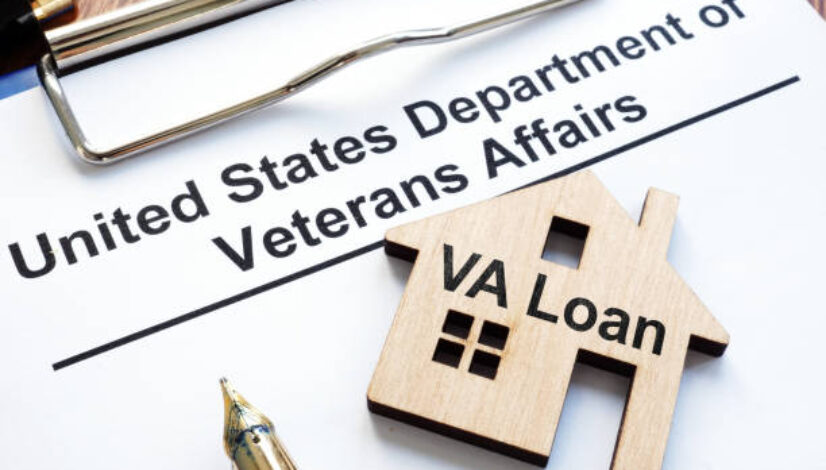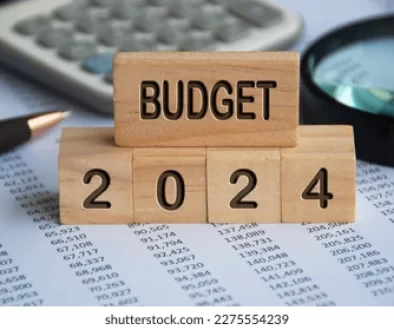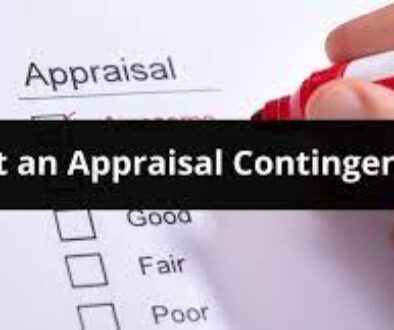Loan Occupancy Requirements for VA
VA Loans
VA Loans: Rates, Eligibility Requirements And More
What Is A VA Loan?
A VA loan is a type of government loan, backed by the U.S. Department of Veterans Affairs (VA).
The VA offers specific guarantees to private lenders that handle VA loans. Because of these guarantees, lenders offer loans that typically feature no down payment to veterans, and they may have less stringent requirements than other loans.
Common Types Of VA Loans
The VA offers a variety of home and refinance loans to borrowers. If you’re not sure which VA loan type would work for your situation
How Does A VA Home Loan Work?
The VA does not issue VA loans, but they do determine who qualifies for one and which lenders issue them. There are several types of VA loans, and they pose less of a risk to lenders because they’re backed by a government agency.
VA mortgages are considered non conforming loans because they don’t meet the guidelines of conventional lenders Fannie Mae and Freddie Mac. However, this allows more flexibility for clients to qualify because of their easier credit score requirements. They offer many advantages over conventional loans, including lower interest rates, more lenient borrowing requirements and no down payment due at closing. VA loans also never have monthly mortgage insurance.
Who Qualifies For A VA Loan?
For those who are eligible, VA loans are attractive because they don’t usually require a down payment. They also have lower interest rates than many other types of mortgage loans you can get for similar terms. They don’t have monthly mortgage insurance.
Although lenders set their own requirements for certain aspects of qualification, VA loans have more lenient credit requirements than many other mortgage programs. That means qualifying for one should be easier, even if you have a poor credit history or small down payment.
Not all who have served in the Armed Forces qualify for a VA loan. You must meet at least one of the following criteria to qualify:
- You’ve served 181 days of active service during peacetime.
- You’ve served 90 consecutive days of active service during wartime.
- You’ve served more than 6 years of service with the National Guard or Reserves or 90 days under Title 32 with at least 30 of those days being consecutive.
- You’re the spouse of a service member who lost their life in the line of duty or as the result of a service-connected disability. You generally cannot remarry, although there are exceptions, as well as other requirements for a spouse getting a VA loan.
Wartime or peacetime definitions depend on when you served. For more information, see the VA’s eligible guidelines.
What Is A Certificate of Eligibility (COE)?
A COE is a document that shows your mortgage lender that you’re eligible for a VA home loan. To get a COE, you need to demonstrate proof of service. The proof you need to submit varies based on whether you’re an active-duty military member, a veteran, a surviving spouse or otherwise qualify for a VA loan.
If you’re eligible, the lending mamba can help you secure your COE.
Documents You’ll Need
Depending on your status, there are several different forms you’ll need to include with your mortgage application in order to qualify.
Veterans Veterans need to submit DD Form 214. DD Form 214 is a certificate that verifies your military discharge. You can request your DD Form 214 online by using the eVetRecs filing system.
Active-Duty Service Members You’ll need a statement of service of VA loans applications signed by your personnel officer, or an adjunct or unit commander if you’re an active-duty service member. The statement of service must include your full legal name, Social Security number and birthdate.
It must document the date you entered the service, information on any breaks or discharges you took from service and the name of the commander providing the information. Ask your superior for a statement of service before you apply for your COE.
If you have at least 90 days of active service, you’ll need one of the following:
- Your DD214 that shows 32 USC sections 316, 502, 503, 504, or 505 activation
- An annual point statement
- Your DD220 with corresponding orders
Discharged Member Of The National Guard Who Wasn’t Activated – Discharged members of the National Guard need to have NGB Form 22, Report of Separation and Record of Service for each period of National Guard service. You must also have NGB Form 23, Retirement Points Accounting and proof of character of service.
National Guard units belong to individual states, so there is no central record archive. Contact the National Guard Adjutant General’s Office in the state where you served and request your NGB Form 22 and 23 to get your COE
Discharged Member Of The Selected Reserve Who Wasn’t Activated – You must have a copy of your annual Retirement Points Statement if you’re a discharged member of the Selected Reserve. You also need proof of honourable service and discharge.
Surviving Spouses- Surviving spouses who do not get dependency benefits can get a COE if they have their spouse’s DD Form 214, their marriage licence and their spouse’s death certificate. You also need to print and complete VA form 21P-534-ARE, which is available on the VA benefits website.
Surviving spouses who receive dependency benefits need to print and complete VA form 26-1817. You can download the form for free from the VA benefits website.
Once you’ve got your evidence, you have a few options to apply for your COE. You can apply online through the VA’s eBenefits website. You can also mail your documents and a completed VA Form 26-1880.
Other VA Loan Eligibility Requirements
Once you’ve verified that you meet the service requirements for a VA loan, you need your income, assets and credit to check out, as well as the property you’re buying. Requirements may also vary for any loans your lender considers a VA jumbo loan.
In order to be in compliance with VA loan occupancy requirements, the property you buy must be your primary residence within 60 days of purchase. You can’t use a VA loan for a vacation or investment property, but you can use it to buy a one-to-four family home if the eligible member uses it as a primary residence.
Credit Score – The VA doesn’t require a specific minimum credit score for VA loans so the credit requirement varies by lender. The minimum median credit score for a VA loan from the lending mamba is 580. If you want to take 100% of your equity out of your home and convert it to cash, this requires a 620 credit score.
Income – Your lender will evaluate your debt to income ratio when considering your ability to pay back the loan. Your DTI represents how much of your monthly income goes toward paying back debt. The VA does not set limits on your DTI, although your lender might. At The Lending mamba the maximum DTI will often vary based on factors like your credit score and down payment or equity amount.
VA Loan Limit – The VA doesn’t limit how much you can borrow, except in the case of impacted entitlement. But when loan limits do apply to a VA loan, they’re usually based on conventional loan limits, which as of 2023 sit at a minimum of $726,200 for contiguous U.S. states. Additionally, lenders often use the conventional loan limits as the lower bounds for VA jumbo loans.
Certain high-cost areas have higher limits. If you need a loan higher than that amount, you may be able to look into a VA jumbo loan, which doesn’t require a downpayment and may offer a lower rate than regular jumbo loans.
Down Payment And Assets – VA loans are one of the few loan options that don’t require a down payment.Your lender may have specific requirements for a no-down-payment VA loan.
For example, they may require that you have a higher credit score if you’re putting down less than 10%. The requirement to purchase a home with a VA loan through The lending mamba with no down payment is still a median of 580 for any loan that falls within conventional limits.
It’s important to keep in mind that “no down payment” doesn’t mean “zero cost.” In addition to VA loan closing costs, there are some other fees to be prepared for, even if you’re putting 0% down. Here’s a glance at just a few of them:
Funding Fee – Most people who get a VA loan are required to pay a funding fee, which covers the cost to taxpayers. The VA funding fee normally ranges from 1.25% – 3.3% of your loan amount. If you previously had a VA loan and you’re doing a VA Streamline, the funding fee is 0.5%.
The cost of the fee is determined by your type of service, the size of your down payment or amount of equity, whether it’s the first-time you’re getting a VA loan and whether you’re buying or refinancing the property. Surviving spouses, veterans who receive disability and Purple Heart recipients serving in an active-duty capacity are exempted from funding fees.
Don’t worry, though. In most cases, if you don’t have the money upfront, the VA funding fee can be rolled into your mortgage.
Reserve Funds – Most loans require you to have additional money in the bank that you’re not using for upfront costs. This ensures that you’ll be able to make payments once your loan closes. The amount of leftover funds you’ll need is determined by the cost of your mortgage payment, including principal, interest, taxes and insurance. Although it’s not always required, it’s a good idea to show reserves equal to 2 months’ worth of mortgage payments.
VA Loan Benefits – VA loans have many benefits over conventional mortgages. Among them are potentially lower interest rates, often having no down payment requirement, no mortgage insurance, easier credit requirements and additional pluses for disabled veterans.
VA Loan Rates Are Typically Lower – Because they’re backed by the government and carry lower risk for lenders and investors, VA loans typically have lower interest rates than conventional loans, particularly for borrowers with credit issues. Learn more about VA mortgage rates here.
VA Loans Usually Don’t Require A Down Payment – VA loans are one of two major mortgage options (the other is the USDA loan for rural home buyers) that typically don’t require a down payment. This means you’ll need less money up front, being able to save the extra or spend it on home furnishings and projects.
100% Loan To Equity Value – You don’t need any equity to refinance your VA loan into a lower rate or take cash out in most cases. In fact, with a VA Streamline loan, you can refinance up to 120% of your home’s value for changing your term or lowering your rate. This means you can refinance even if you owe more on your home than it’s worth.
No Private Mortgage Insurance (PMI) – VA loans don’t require PMI. PMI is mortgage insurance on conventional loans that a lender may require you to pay if you don’t put 20% down. Not having to pay PMI can save you between 0.1 – 2% of your loan amount per year until you reach 20% equity.
Lenient Borrowing Requirements – VA loans allow you to qualify with a higher DTI than any mortgage program from one of the major mortgage investors. If your credit score is 620 or better, DTI to qualify can vary based on factors like credit score and down payment amount.
If your score is at least 580 but less than 620, your mortgage payment can’t account for more than 38% of your gross monthly income. Additionally, your total DTI can be no higher than 45%.
The VA loan is the only program that lets you access 100% of your equity in a cash-out refinance, a key difference from. standard refinancing requirements The lending mortgage requires your credit score to be at least a median of 620 or higher to do this. Otherwise, you can take out up to 90% of your home equity if you have a median score of 580 or better.
Additional Benefits For Disabled Veterans
In addition to standard VA loan benefits, disabled veterans also have access to other benefits as well.
Exemption From Funding Fees – Disabled veterans are exempted from the VA funding fee, so they don’t have to pay the VA funding fee during closing. To qualify for the exemption, you must currently receive some form of disability benefits. Your level of disability is irrelevant.This exemption can save veterans or their surviving spouse thousands of dollars. For example, if you buy a home worth $200,000, you might pay as much as $2,800 – $7,200 in VA funding fees when you close. Disabled veterans can avoid this fee.
Access To Specially Adapted Housing (SAH) Grants
Do you have a disability that affects your mobility or sight? You may qualify for a SAH grant.
SAH grants can go toward constructing a special home designed to fit the needs of the disabled individual. Or they allow you to modify an existing home to make it more accessible. SAH grants can also pay the unpaid balance of an adapted home already purchased without VA grant assistance.
In 2022, you may qualify for a grant of up to $101,754, and you may use the money from the grant up to six times – as long as your disability qualifies. Because the SAH is a grant and not a loan, you don’t need to pay it back.
Access the Special Housing Adaptation (SHA) Grant
The main difference between the SHA grant and the SAH grant is the amount of funding available. Which one you qualify for may depend on the severity of your injuries and the number of grants available. The maximum funding under this grant is $20,387 for 2022. The funds can also be used up to six times.
Access To Other Adaptation Grants
Disabled veterans may also qualify for a Temporary Residence Adaptation (TRA) grant to add modifications to your property that make it easier to navigate if you live with a family member. Like SAH grants, you won’t need to pay back your TRA grant, which makes them a powerful tool for veterans with mobility-related disabilities.
Property Tax Exemption – Property taxes fund things like libraries, fire departments, and local road and development projects. Disabled veterans’ property tax exemptions can lower the amount you must pay in property taxes.
These tax exemptions aren’t a federal program, and they vary by state and possibly area of residence, so check with your local VA office to learn the exemptions you’re eligible for. Some states offer an exemption to all veterans, while other states limit this benefit to veterans who are currently receiving disability payments. Disabled veterans are 100% exempt from property taxes in some states.
How To Apply For A VA Loan: 6 Steps
Applying for a VA loan is a lot like applying for any other mortgage in many respects. Take these six steps into consideration when applying.
- Secure A Certificate Of Eligibility (COE)
You’ll need this to be eligible for your VA loan. You’ll need to provide proof of your military service based on your status.
VA-approved lenders, like The lending mamba, can help you get your VA certificate of eligibility quickly with proof of service.
Tell your lender you need your certificate of eligibility early in the process so they can help you get it.
- Apply For Approval
When buying a home, get pre approved early on. The approval will give you a baseline for determining how much you can afford. In addition, when you make an offer on a house, you’ll find sellers tend to take offers more seriously if a letter of pre approval is attached.
- Shop For A House
Finding a house with a VA loan is like finding a house with any other loan option. Whatever property you buy must meet the VA minimum property requirements, or MPRs. MPRs ensure the home is safe, structurally sound and sanitary. These requirements vary according to known risks in an area.
- Make A Purchase Offer
Once you find a home you like in your price range, put in an offer to buy the home. The seller may accept your offer, reject the offer or counteroffer. Once you and the seller agree on a price, a real estate agent or attorney can help draw up a sales contract.
- Undergo VA Appraisal And Underwriting
Underwriters from your lender assess your finances and make sure you qualify for a VA loan. The VA will also require an appraisal before they approve the loan. VA appraisals are stricter than conventional loans. During a VA appraisal, the appraiser will check that the home meets the VA’s MPRs and is sanitary, structurally sound and move-in ready with minimal repairs.
- Close On Your New Home
Once the VA appraiser says your new home is safe and sound, it’s time for you to sign on your new home, get your loan and receive the keys to your new property.
The Bottom Line: Is A VA Loan Right For You?
A VA loan is an important benefit earned by our military. If you qualify, you can get a great interest rate with no money down, which means homeownership can be more affordable with a VA home loan.https://thelendingmamba.com/
If you feel like you’re ready, apply for a VA loan with The lending mamba today!




